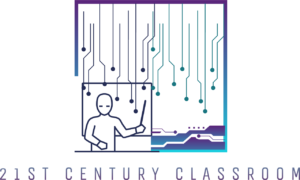Collaboration lies at the heart of successful organizations, driving innovation, productivity, and employee engagement. In today’s interconnected workplaces, fostering effective collaboration is more important than ever. This blog post aims to provide you with valuable strategies to cultivate collaboration within your teams and organizations, paving the way for success.
Understanding the Foundations of Collaboration
Before we delve into the strategies, it is crucial to understand the foundations of collaboration. Collaboration is the collective effort of individuals working towards a common goal, leveraging their unique skills and perspectives. By embracing collaboration, organizations unlock a multitude of benefits, including increased productivity, creative problem-solving, and enhanced employee satisfaction and retention.
Creating a Collaborative Culture
Building a collaborative culture begins with leadership. Leaders play a pivotal role in establishing an environment where collaboration can thrive. They must champion open communication, encourage trust, and foster mutual respect among team members. By leading by example and promoting a culture of collaboration, leaders set the stage for success.
Organizations such as Google and Pixar have successfully cultivated collaborative cultures. They have created spaces that encourage cross-functional interactions, foster idea sharing, and empower employees to contribute their expertise. These organizations understand that collaboration is not limited to formal meetings but extends to informal conversations and interactions.
Establishing Clear Goals and Roles
Clarity is essential for effective collaboration. Clearly defined goals and roles ensure that team members understand their responsibilities and how their efforts contribute to the larger picture. When everyone is on the same page, collaboration becomes more streamlined and focused.
To establish clear goals, it is important to make them specific, measurable, attainable, relevant, and time-bound (SMART). This framework helps teams align their efforts and track progress effectively. Similarly, assigning roles and responsibilities based on individual strengths and expertise promotes accountability and maximizes collaboration’s potential.
Encouraging Effective Communication
Open and effective communication is the cornerstone of successful collaboration. It enables team members to exchange ideas, provide feedback, and align their efforts towards shared objectives. Active listening, empathy, and constructive feedback are crucial components of effective communication.
To improve communication within teams, encourage a culture of openness and transparency. Foster an environment where everyone feels comfortable sharing their thoughts and ideas without fear of judgment. Implement regular check-ins, team meetings, and brainstorming sessions to ensure everyone’s voices are heard. Additionally, provide training and resources to enhance communication skills, including active listening and giving and receiving feedback.
Leveraging Technology for Collaboration
Technology plays a significant role in enabling collaboration, particularly in remote or distributed teams. Collaborative tools and platforms provide a virtual space for teams to connect, share information, and work together seamlessly.
A wide array of collaboration tools are available, ranging from project management platforms like Asana and Trello to communication tools like Slack and Microsoft Teams. These tools facilitate real-time collaboration, document sharing, and seamless communication across different time zones and locations. By leveraging technology effectively, organizations can bridge geographical gaps and foster collaboration among diverse teams.
Promoting Collaboration Across Departments
Collaboration should not be confined within individual teams or departments. Interdepartmental collaboration brings together diverse perspectives and expertise, driving innovation and problem-solving on a larger scale.
To promote collaboration across departments, break down silos and encourage cross-functional interactions. Establish regular forums or joint projects where representatives from different teams or departments can collaborate and exchange knowledge. This fosters a culture of collaboration that transcends individual units and enhances organizational effectiveness.
Dealing with Challenges and Conflict
Collaboration is not without its challenges. Conflicts and disagreements are natural in a collaborative environment. However, effective conflict resolution strategies can turn challenges into opportunities for growth.
Encourage open dialogue and respectful communication to address conflicts constructively. Create a safe space where team members can express their concerns and work towards mutually beneficial solutions. Emphasize the importance of empathy and understanding, as these qualities are crucial in resolving conflicts and maintaining positive team dynamics.
Recognizing and Celebrating Collaboration
Recognition and celebration play a vital role in reinforcing collaborative efforts. Acknowledging and rewarding collaborative achievements not only motivates team members but also reinforces the value of collaboration within the organization.
Create a culture of recognition by publicly acknowledging collaborative efforts. Celebrate successes, both big and small, through team events, awards, or newsletters. Recognize individuals who embody the spirit of collaboration and encourage others to follow suit. By celebrating collaboration, organizations reinforce its importance and inspire continued efforts.
Takeaway
Fostering effective collaboration is a journey that requires dedication and commitment from both leaders and team members. By creating a collaborative culture, setting clear goals, promoting effective communication, leveraging technology, encouraging interdepartmental collaboration, addressing challenges, and celebrating achievements, organizations can unlock the true potential of collaboration.
As you embark on this journey, remember that effective collaboration is a catalyst for organizational success. Implement these strategies within your teams and organizations, and witness the transformative power of collaboration unfold. Together, we can build a collaborative future where innovation and success know no bounds.

